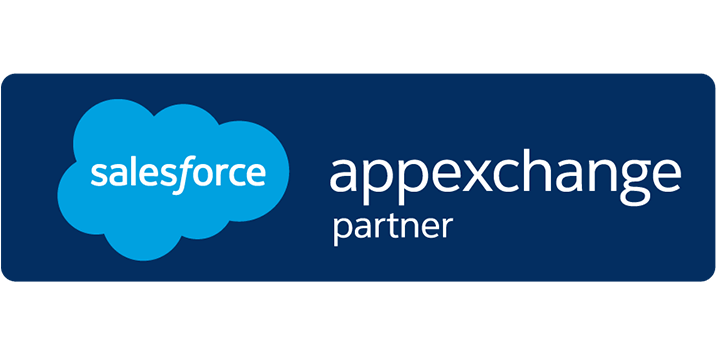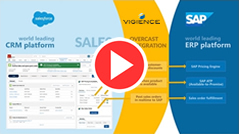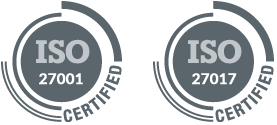Business Process Insights
Salesforce Customer 360 – worth nothing without SAP data
Salesforce Customer 360 – everything you need?
With their Customer 360 solution, Salesforce has a great offering that brings relevant information about your customers, that your sales team needs, in one, user-friendly application. This includes for example:
- Detailed customer information including the activity stream
- Addresses
- Contact persons
- Open opportunities
- Cases, work orders, assets and other data relevant to field service
- Tasks, notes and files
- Campaigns and other information regarding marketing
But is this all? Is this really all information a sales rep needs? Let’s imagine the following situation:
Our sales rep wants to call an important corporate client to follow up on an open opportunity. Before the call he wants to get a 360-degree view of his customer. This includes:
- What other open opportunities do we have with this account?
- Are there any open cases and work orders the account might ask me about?
- Are there any open, overdue invoices I need to discuss with the customer?
- Are we late on any deliveries that we promised to the client? If so, when will we be able to deliver?
While point 1 and 2 is data that the sales rep can get from Salesforce, he will need to consult a different system to learn about 3 and 4. In most large organizations, this is an SAP system, either SAP ERP or SAP S/4HANA. In other, smaller companies this could be also a Microsoft Business Central, Oracle NetSuite or SAP Business One solution.
So, our sales rep is checking Salesforce and SAP to get all relevant information to be well prepared for his customer call. During the call he is taking notes in Salesforce and the client asks: “I am thinking about buying product A from you. Can you deliver 420 units by 25th April? And what would be the price for me? To get the answer, the sales rep needs to leave Salesforce and check in SAP if we can promise this quantity to be available in April. Other requests the customer might have is to check on issues with an invoice or information about open deliveries.
I guess you see the problem here. As user-friendly as Salesforce is, the work of the sales rep is made unnecessarily difficult by the fact that he must work in multiple systems to do his job. It is definitely possible to work like this, and many companies are still working this way, but he is losing productivity and time. Worse than that, the customer is not getting the best possible service that he could get.
Wouldn’t it be great if all the information was available in Salesforce, if our sales rep could get all relevant data about invoices, pricing, and ATP (available to promise) in one consistent, user-friendly UI? Guess what, it is possible, and it might be a lot easier to do than you think.
Salesforce and SAP – their strengths and weaknesses
Before discussing how we can integrate the two systems, let’s first look at what makes both solutions unique.
Salesforce is the leader in cloud-based CRM solutions. It is easy to implement and can be setup in a few days. Enhancements and new functionality can be implemented without much coding thanks to its powerful no-code approach. Salesforce is famous for its user-friendly interface.
SAP on the other hand has its strength in the nearly endless functionality across all parts of the enterprise – from finance to human resources, from production planning to field service and many other areas. Here SAP has a clear advantage over Salesforce that is focusing more or less on CRM.
SAP however is known for having deficits in its user experience and that it could be more user friendly (to put it mildly).
The best of both worlds with Vigience Overcast
With Vigience Overcast, you can have the best of both worlds. It allows to integrate SAP data and business processes in real-time into Salesforce, bringing together the rich functionality of SAP with the beloved user interface of Salesforce.
Overcast – SAP integration into Salesforce made easy
As many companies use the combination of Salesforce plus SAP and as they all benefit from an integration of the two systems, we developed Overcast. It is the easiest way to integrate Salesforce with SAP. With Overcast you can create a true customer 360 view for your sales reps, account managers and other users.
 Salesforce Customer 360 with information from SAP
Salesforce Customer 360 with information from SAP
The Overcast Component Library
While Overcast allows you to create your own integrations into SAP and other systems – like most other iPaaS (integration platform as a service) solutions, it goes two steps beyond that:
- Overcast does more than just simple data integration, it also has a solution for the user interface layer. Data from any backend system can be displayed in lightning components in real-time without the need for any coding.
- Overcast comes with the Component Library, which is kind of an app store with predefined integrations.
For our customer 360 use case, we have several components that come in handy:
- SAP Customer Replication – replicate business partners into the Salesforce Account object
- SAP Sales Order History, SAP Delivery History and SAP Invoice History – get an overview of the accounts sales orders, deliveries and invoices from SAP.
 SAP Deliveries
SAP Deliveries SAP Invoices
SAP Invoices SAP Sales Orders
SAP Sales Orders - SAP Sales Overview, SAP Credit Status and SAP Actuals vs. Forecast – three components that display data from SAP in chart-form. The Actual vs. Forecast component is a mashup of data from SAP (closed and open sales orders) and Salesforce (opportunities).
 SAP Actuals vs. Forecast
SAP Actuals vs. Forecast SAP Credit Status
SAP Credit Status SAP Sales Overview
SAP Sales Overview
Many more components are available, which can help to give the user a better insight into the customer – attachments from SAP can be displayed in Salesforce, customer service information can be shown, and the user can even create sales orders in SAP without leaving the Salesforce user interface.
In addition to the prebuilt SAP content, it is a matter of minutes to integrate and visualize any data in SAP from any table or API as well as to do the same for any other Web Service-enabled backend system like Microsoft Dynamics 365, Oracle NetSuite or SAP Business One.

Conclusion
Without the integration into an ERP system like SAP, Salesforce can only show half of the information that your users need to get a 360-degree view on their accounts. For a truly amazing user experience it is necessary to bring both systems together under one user interface. Vigience Overcast offers all relevant integrations for customer 360 out-of-the-box so that such an integration can be done in weeks.
If you want to learn more about how Overcast can help your organization to implement a true customer 360 solution in Salesforce, get in touch with us.
AUTHOR

Alexander Ilg








